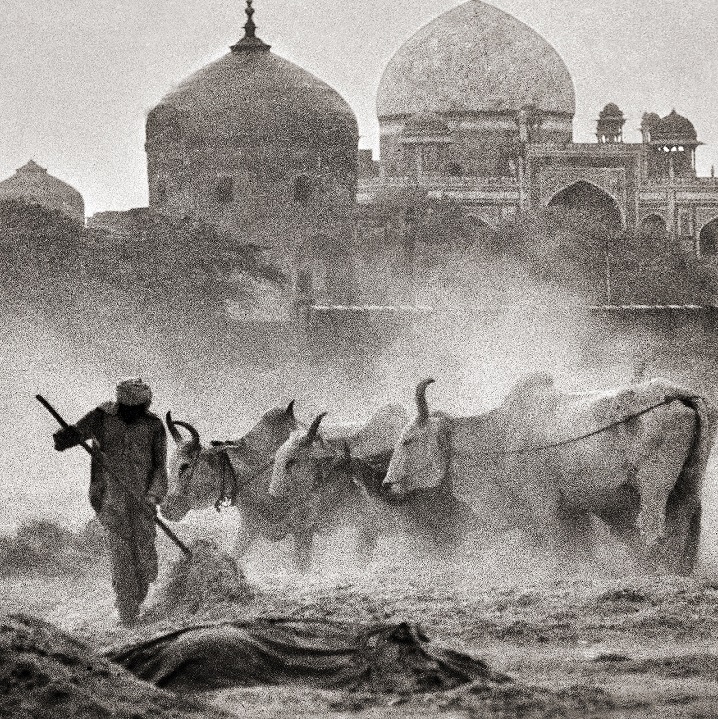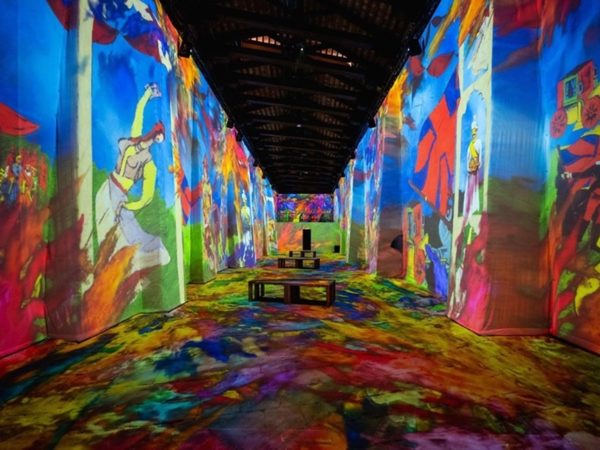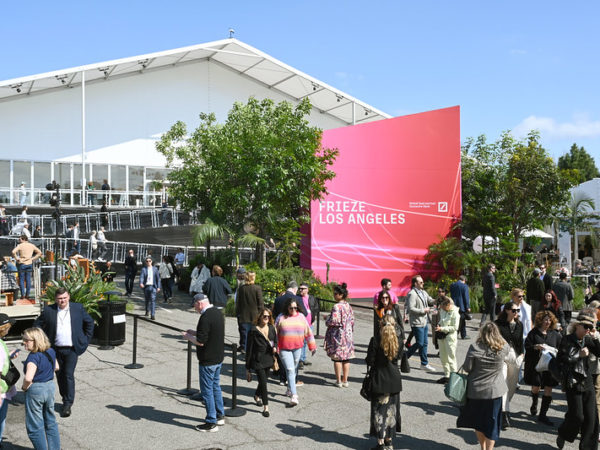Delhi That Was: A Nostalgic Glimpse of Delhi Curated by Anubhav Nath

Raghu Rai, Wheat Thrashing, Humayun’s Tomb, Delhi, 1967
An exhibition featuring rare monochromes and colour photographs that offer an unusual peek into the Delhi of yesteryears is currently on display at Ojas Art in the Capital. This monumental display, titled Delhi That Was, highlights photography as a medium of reminiscing and storytelling, and has been curated by Anubhav Nath, the curatorial director of Ojas Art gallery. In the preface to the catalogue, Nath gives an overview of the collection in the following words:
“Personally, with centuries of family history in Delhi, I am the quintessential Delhiwalla, and no other city even comes close to Delhi. The only place that may be better than Delhi as it exists today is the city as it existed in the past, the Delhi… that was. This exhibition features that.”

Habib Rehman, Curzon Road hostels, 1967
The month long exhibition showcases photographs from the legendary archives of Habib Rahman, Madan Mahatta and Raghu Rai. These photographs, spanning five decades (1950s to the 1990s), explore Delhi at various levels – the city as a seat of power, as a society in flux, as a culturally diverse melting pot, as a city in its post-colonial glory harboring vestiges of the Mughal Empire and the British Raj.
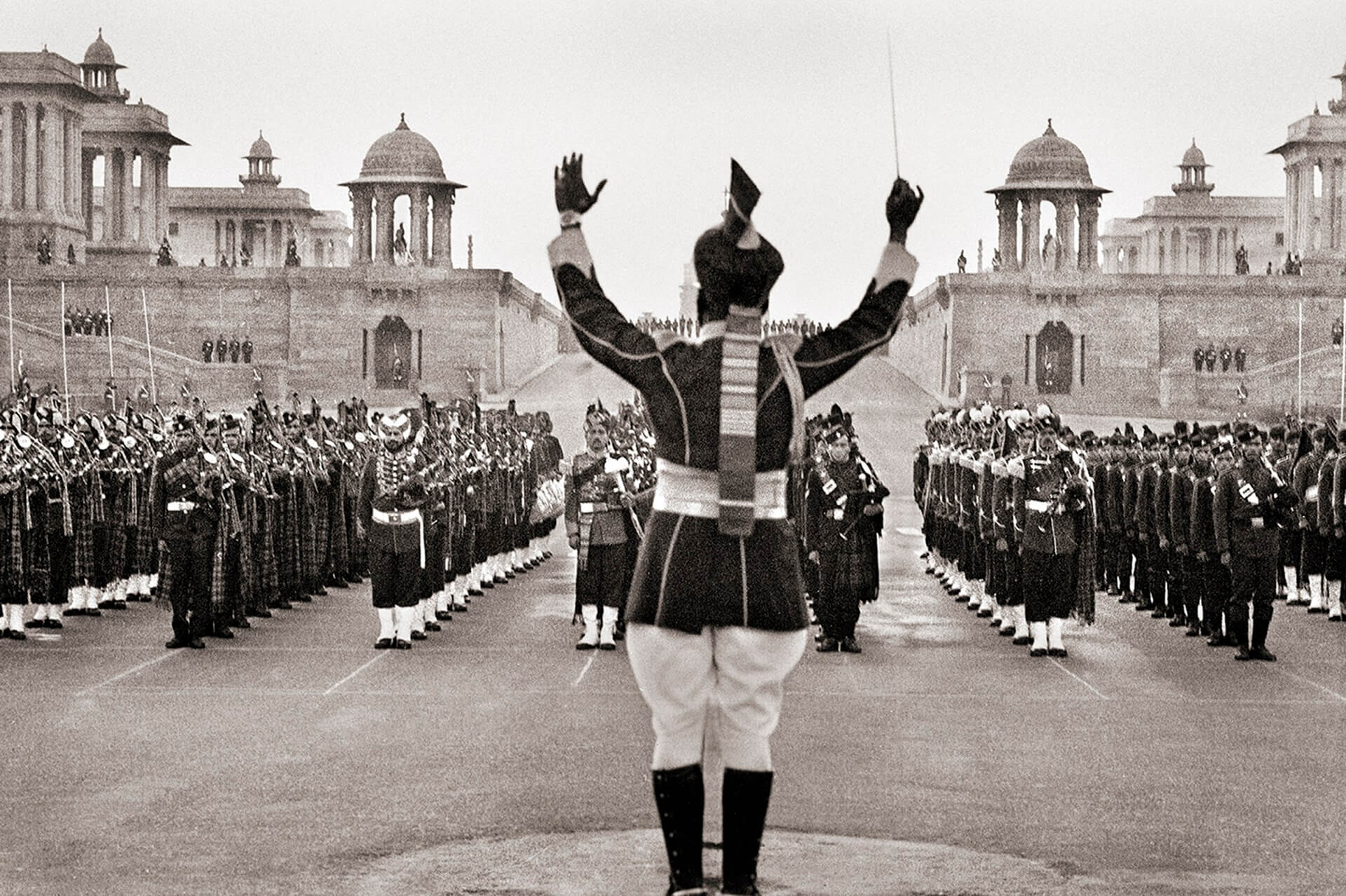
Raghu Rai, Beating the Retreat at Vijay Chowk, 1967
Breezy Girl, Humayun’s Tomb, 1973 – a compelling image from Raghu Rai’s acclaimed archive; of a breezy little girl spilling over with bonhomie captured against the backdrop of Humayun’s tomb greets you as you enter the show. An array of striking images, taking you through various hues and flavors of the bygone era follow. In many of these images, Rai has photographed his subjects against the background of monuments and has returned to the same motifs with a fresh perspective in each capture. “Since I was based in Delhi, on my lean days, I started visiting the heritage sites and monuments…I would usually walk away, going to less visited places around the monument to see what was going on there. This usually gave me a different sort of canvas”, recounts Rai. Humayun’s tomb also features as a backdrop in frames like Wheat Thrashing, Humayun’s Tomb, Delhi, 1967 and Crossing Railway Track Opposite Humayun’s Tomb 1968. Many of his arresting captures also feature the Jama Masjid in the background.
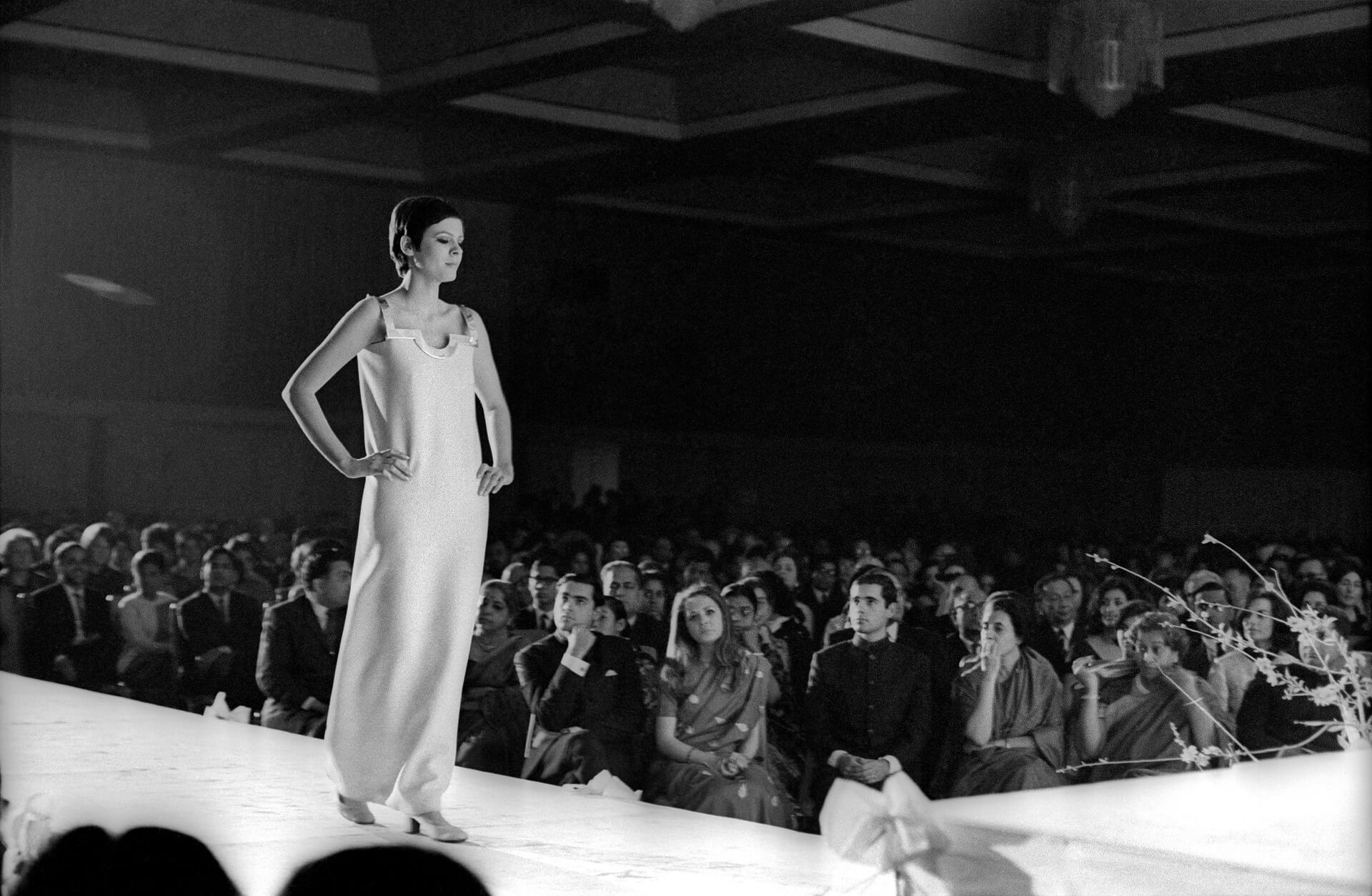
Madan Mahatta, Pierre Cardin Fashion Show, Delhi, 1967
Displays like Safdarjung Tomb by Glider, 1972; Glider Being Towed over Qutub Minar, 1972 and Connaught Place 1971, from Mahatta’s archive offer panoramic views of the cityscape and monuments. Some of his rare captures include Queen Elizabeth and Dr. Rajendra Prasad Motorcade Passing through Connaught Place, 1961, taken during the Queen’s first visit to India and Pierre Cardin Fashion Show, Delhi 1967, where the Gandhi family can be seen sitting in the front row. His special affinity for Connaught place is seen in many displays – Connaught Place During Rains, Delhi 1970 captures the waterlogged streets of Connaught place. Mahatta & Co., Connaught Place, Delhi 1951 is a photograph of his studio. Other pictures from his archive capture Jantar Mantar, the Delhi Zoo entrance and the Talkatora stadium.
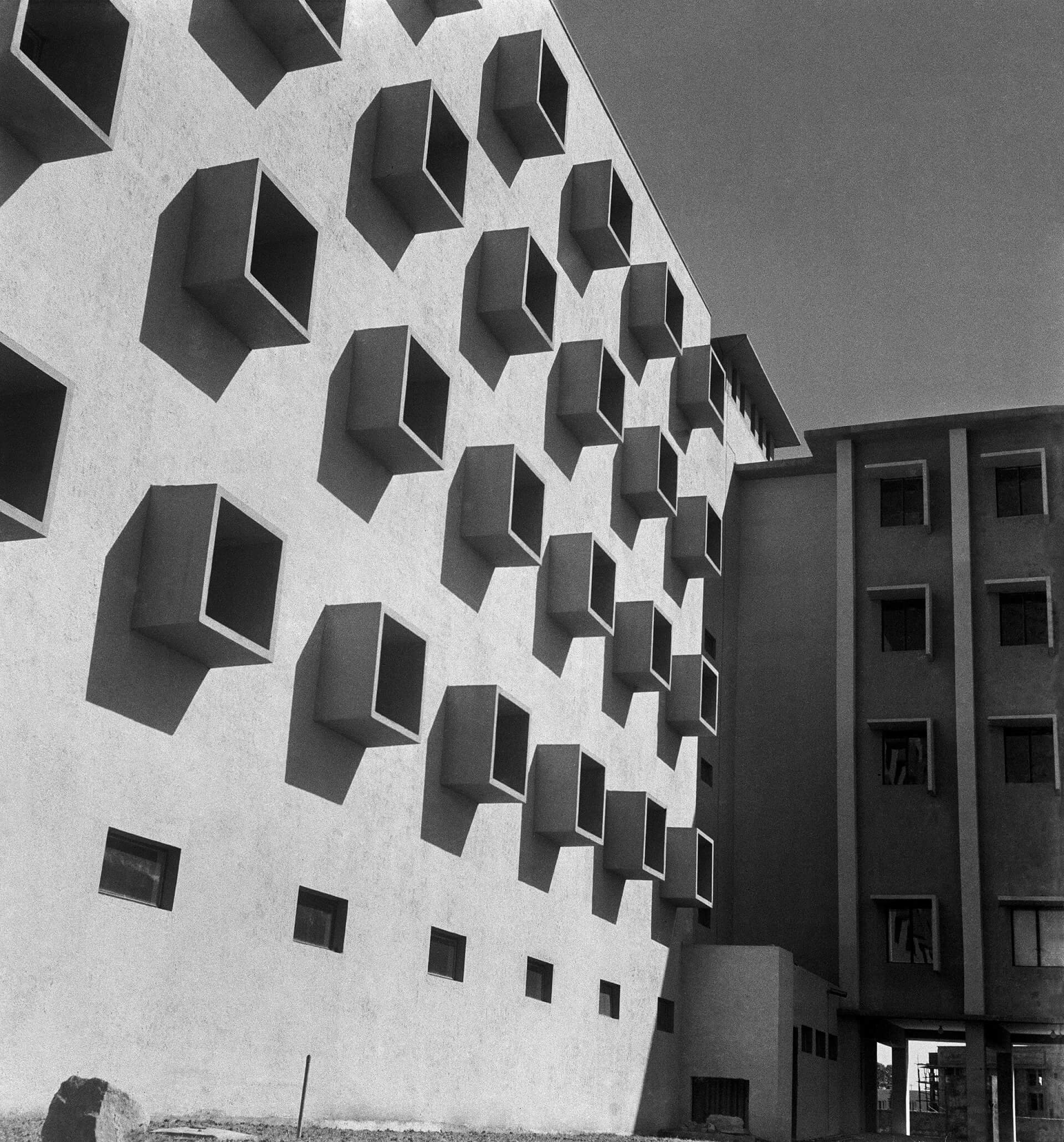
Habib Rehman, Accountant General building, 1954
One of the highlights of Rahman’s illustrious collection is a series of photographs of the Rabindra Bhawan -a building which houses the Lalit Kala Academy and was designed by Rahman himself. Other significant works include Inder Gujral, Indrani with Ram, Satish Gujral, MF Husain, Charles Fabri, 1957 and Indrani Portrait, 1953. In 2012, Ojas Art had exhibited several stunning frames from Raghu Rai’s archives. This year, the format was expanded to showcase pieces from the archives of these three celebrated artists, each of whom has a distinct take on this ever evolving, elusive city when reminiscing about its past.

Madan Mahatta, Mahatta & Co., Connaught Place, Delhi, 1951
On view from October 5 till November 12, this month long display of visual memoirs is poignant and evocative, and leaves an indelible mark on the uninitiated as well. These images serve as conduits for self-introspection and the principal takeaway of this exhibition is a heightened awareness to preserve the architecture, monuments and ethos of this timeless city.
Text by Prachi Goyal

